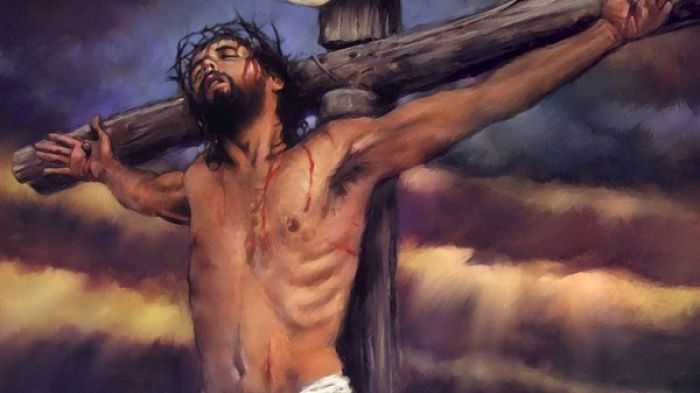Ta'ata'a

Kōlomu 'Aati & Litilesā: Faiva Ta'anga, Faiva Hiva, & Faiva Haka / Art & Literature Column:
Performance Arts of Poetry, Music, & Dance
Ta'ata'a
Ko e ta'anga hiva fakalotu & fakamamahi
Ko e fakafatu/fakafa'u & fakaafo/fakafasi 'e Nōpele Ve'ehala (Leilua) Ko e liliulea 'Ingilisi 'e Mele Ha'amoa Māhina 'Alatini & Hūfanga-He-Ako-Moe-Lotu, 'Ōkusitino Māhina
1. Ta'ata'a lea ē
Ta'ata'a mā'uhinga
'Oku kei tulutā pē
Ko hotau vai[1] fakama'a ia
5. Kuo mo'ui 'ae mate
Pea kuo hao ai 'eta hia
Ta'ata'a lea ē
Ta'ata'a mā'uhinga
Pea kuo mo'ui ai 'ae mate
10. Pea kuo hao ai 'eta hia
Christ's Blood
A sung poetry of theology & tragedy Poetry & music composed by Noble Ve'ehala (Leilua)
English translation by Mele Ha'amoa Māhina 'Alatini & Hūfanga-He-Ako-Moe-Lotu, 'Ōkusitino Māhina
1. Blood, you speak forth
Blood, you're unrivalled
As drops, you're still flowing
You're our water[1] of salvation
5. The dead have been brought to life
Our sins have been forgiven
Blood, you speak forth
Blood, you're unrivalled
The dead have been brought to life
10. And our sins have been forgiven
Ko e fakava'e/fakafutinouti/footnotes
[1] 'Oku ngāue'aki 'ae "vai" koe heliaki kihe "toto" 'oku toe 'uhinga koe "ta'ata'a" 'o Sisū he'ene taupe he Kolosi 'Akaufakalava koe ma'u meihe kikite he Fuakava Motu'a (koe fakatau'atāina fakapolitikale moe sauni) hono taa'i 'e Mōsese 'ae Maka 'i Holepi 'o puna mei i 'ae vai 'o inu mei ai 'ae fānau 'a 'Isileli he'enau fonongaloa he toafaloa koe heliaki kihe mo'ui moe mo'ui'anga he Fuakava Fo'ou (koe fakatau'ataina fakalaumālie moe fakamolemole).
[1] The "water" is used here as a metaphor for the sacrificial "blood" of Christ vis-a-vis His tragic death on the Cross; it is a metaphor for the prophesy in the Old Testament (i.e., political liberation and revenge) about the coming of the Messiah, marking the New Testament (i.e., spiritual liberation and forgiveness) which involved the striking of the Rock at Horeb by Moses, with the water flowing from it as a life-source/life-force for the Israelites.
Koe huluhulu/kinikini/fakamatala nounou
Na'e fakafatu/fakafa'u mo fakaafo/fakafasi 'ae ta'anga hiva "Ta'ata'a" he ongo/afo/fasi fakafa'ahikehe ('o fasi mo laulo 'o va'inga 'ae fasi kae le'otaha mo ololalo 'ae laulalo hono hiva mo tā/ififangufangu) 'e Nōpele Ve'ehala (Leilua) 'ae Ta'ata'a kihe feilaulau tōmatakakano 'a Sisū Kalaisi he 'Ene pekia he kolosi 'akaufakalava hono tukifa'oa moe hokataoa.
A brief note
Both the poetry and music "Christ's Blood" was composed (the sung and performed on the fangufangu nose-flute in the so-called minor sound/tune/tone as the early missionaries translated and understood, normally in two parts, viz., fasi melody-leading voice in free range and laulalo bass in both unison and drone) by Noble Ve'ehala (Leilua), i.e., about the sacrificial death of Christ on the Cross.
ANFF leva e malanga kae tau mo a'u,
'Ofa fau moe 'ānau ma'u,
Tavakefai'ana, Sēmisi Fetokai Kulīha'apai Moahehengiovava'ulahi Potauaine, Unitec Institute of Technology & Vava'u Academy for Critical Inquiry & Applied Research.
Professor Maui-TāVā-He-Ako Dr Tēvita O. Ka'ili, BYU Hawai'i & Vava'u Academy for Critical Inquiry & Applied Research.
Professor Hūfanga-He-Ako-Moe-Lotu Dr 'Ōkusitino Māhina, Vava'u Academy for Critical Inquiry & Applied Research & Lagi-Maama Academy & Consultancy
--



